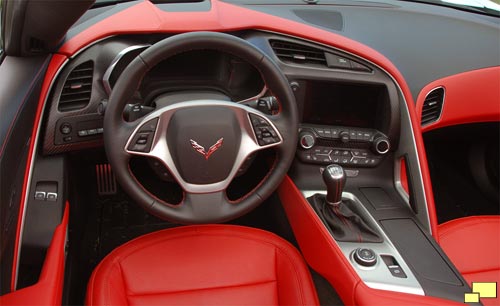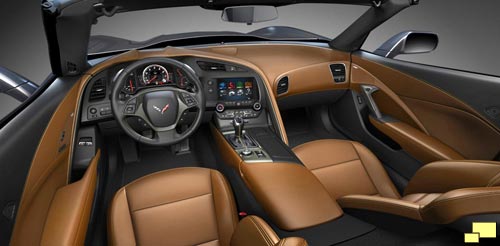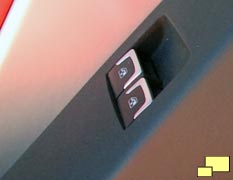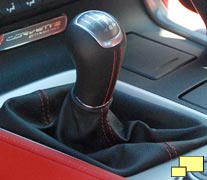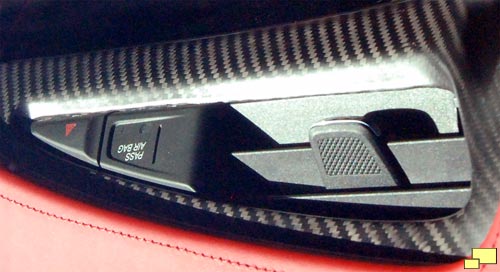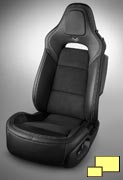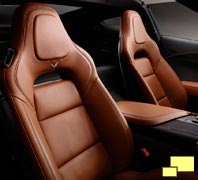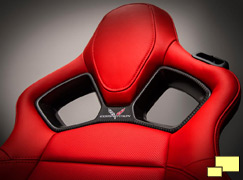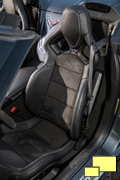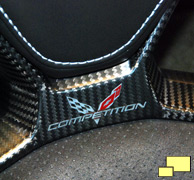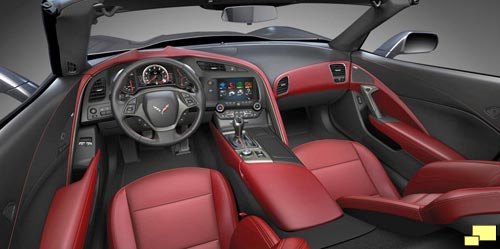Corvette Generations:
C1 C2 C3 C4 C5 C6 C7 C8
Corvette: Year by Year
1953 1954 1955 1956 1957 1958 1959 1960 1961 1962 19631964 1965 1966 1967 1968 1969 1970 1971 1972 1973 1974
1975 1976 1977 1978 1979 1980 1981 1982 1983 1984 1985
1986 1987 1988 1989 1990 1991 1992 1993 1994 1995 1996
1997 1998 1999 2000 2001 2002 2003 2004 2005 2006 2007
2008 2009 2010 2011 2012 2013 2014 2015 2016 2017 2018
2019 2020 2021 2022 2023 2024 2025
Corvette C7 Interior
The seats were derided as "Barcaloungers", fine for a Buick but unacceptable in a performance car. Keeping the driver firmly in place when driving at the high limits of a Corvette is important and the C5 / C6 seats were just not up to the job. The balance of the interior was also often beaten up. Critics felt that the materials were less than the competition and what buyers should expect at the Corvettes price point and that the design was sort of well, blah.
Whatever sins may have been committed by the C5 / C6 interior, they were forgotten when the inside of the 2014 Corvette was revealed.
Interior color choices include, Gray, Adrenaline Red, Jet Black*, Kalahari* and Brownstone*.
*Available with sueded microfiber inserts
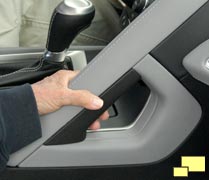 A grab bar for the passenger first made its Corvette appearance in 1958 in a horizontal format above the glovebox and continued thru the C2 generation to 1967. It skipped the C3 and C4 generation only to reappear for the C5. The concept then took a generation off for the C6 but appeared again in the C7 in 2014, this time in a vertical configuration and mounted on the center console. Considering the performance available, its use can be assumed to be frequent and welcome.
A grab bar for the passenger first made its Corvette appearance in 1958 in a horizontal format above the glovebox and continued thru the C2 generation to 1967. It skipped the C3 and C4 generation only to reappear for the C5. The concept then took a generation off for the C6 but appeared again in the C7 in 2014, this time in a vertical configuration and mounted on the center console. Considering the performance available, its use can be assumed to be frequent and welcome.
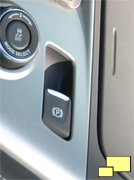 Also on the long list of changes is an electric parking brake located on the console just south of the shifter and next to the mode select switch. It replaced the conventional mechanical - cable system on the C6 and freed up a lot of room in a critical area of the interior.
Also on the long list of changes is an electric parking brake located on the console just south of the shifter and next to the mode select switch. It replaced the conventional mechanical - cable system on the C6 and freed up a lot of room in a critical area of the interior.
Seat Time
Below: The competition seat (RPO AE4; $1995.00, $2,495 with suede inserts) with pass thru for a five point racing harness is a winner. Note the detail of the carbon fiber trim (far right). The seat is the equal of the best the aftermarket offers and entry / egress is not difficult, a common performance seat problem.




